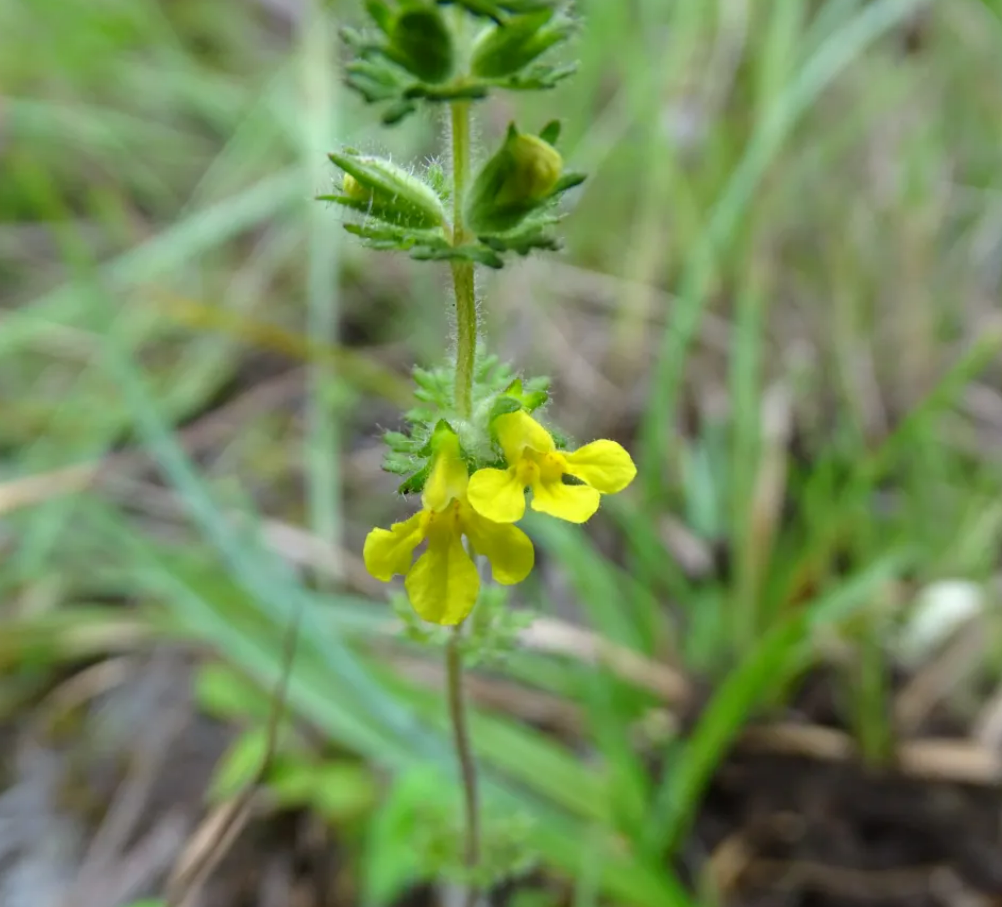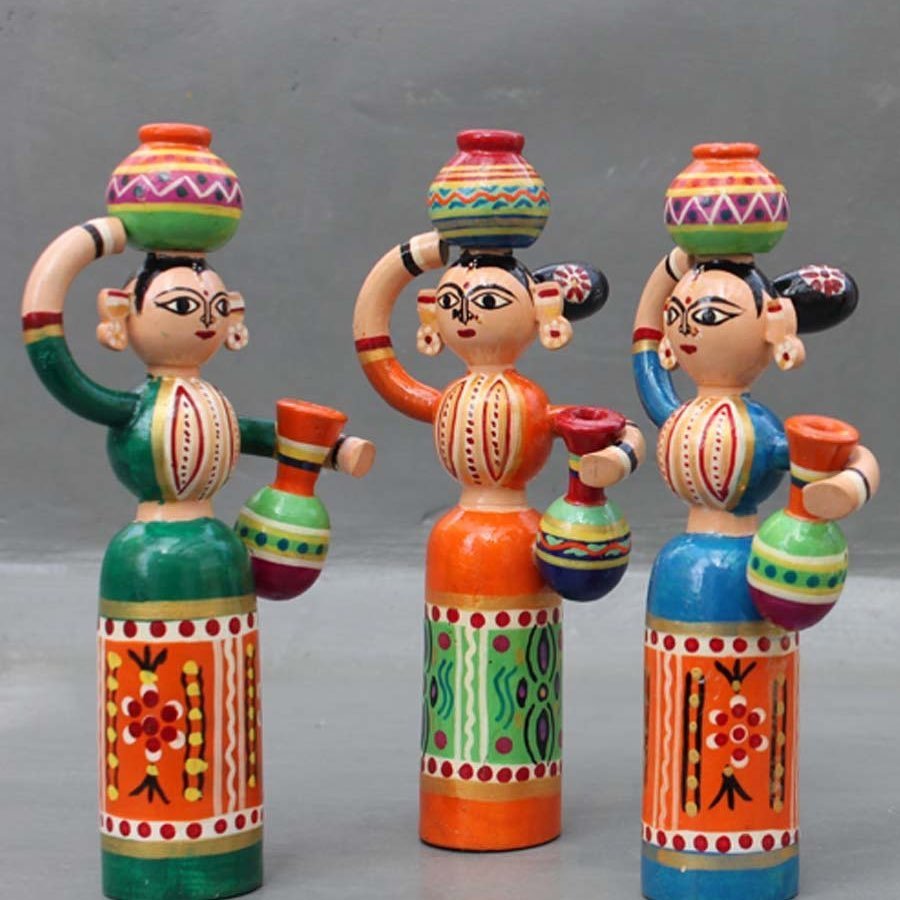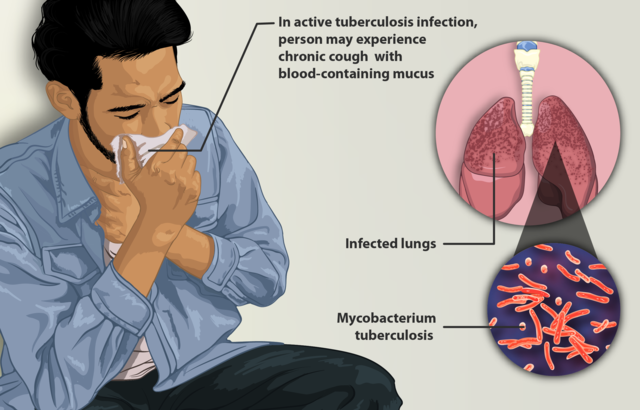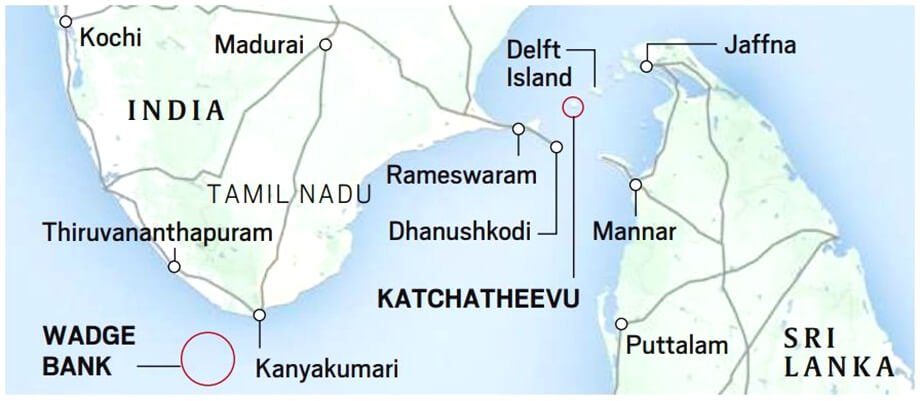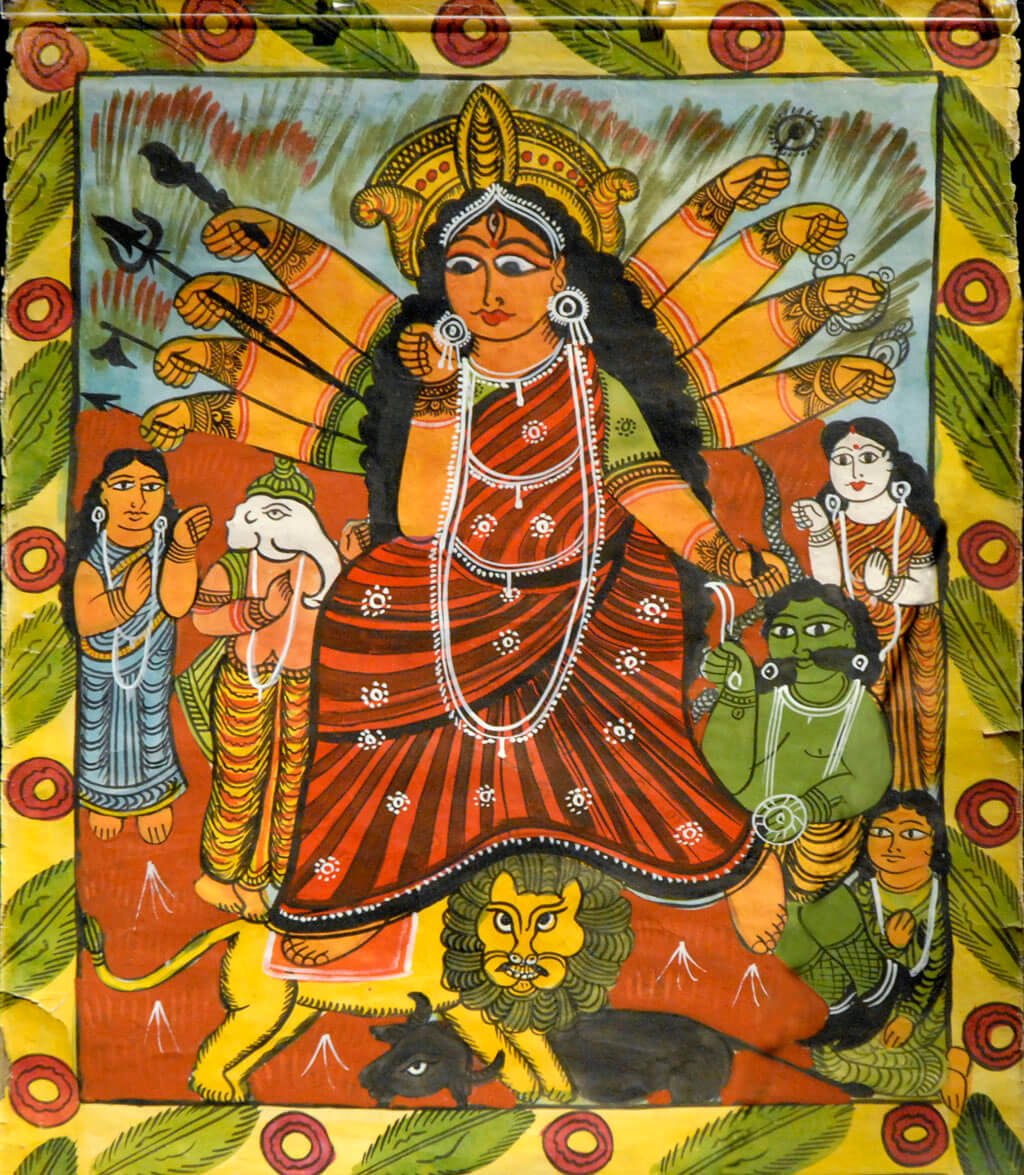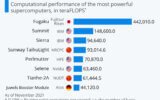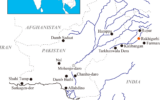{GS2 – IR – China-Taiwan} Chinese drills near Taiwan
- Context (IE): Large-scale Chinese military drills named “Joint Sword-2024A” are taking place near Taiwan just days after the swearing-in of Taiwanese President William Lai Ching-te.
- These drills are seen as military means to send political signals and China’s “grey zone” tactics.
- Grey zone warfare generally means a middle, unclear space that exists between direct conflict and peace in international relations.
|
Taiwan’s response
- Condemnation: Taiwan condemned the drills as an “irrational provocation” and mobilised sea, air and ground forces to demonstrate preparedness.
- Porcupine strategy: This asymmetric warfare capacity involves using smaller but highly effective weapons, including unmanned aerial vehicles (UAVs), like the domestically developed drone “Albatross II,“ to make an invasion by a larger force prohibitively costly.
- Natural defences: The Taiwan Strait, with few deep-water ports on the Taiwan coast lined by cliffs, discourages invasion, which is further limited by the monsoon season and Taiwan’s mountainous terrain.
- Defence capabilities: Taiwan’s government has increased defence spending by an average of nearly 5% per year and, as a percentage of GDP, increased from 2% to 2.5%.The Taiwan Relations Act by the US allows for the supply of “defensive” weapons.
Taiwan Strait
- Also known as Formosa Strait, Strait of Fokien or Fujian and the Black Ditch.
- Separates: Taiwan from continental Asia (China). Connects: South China Sea and East China Sea.
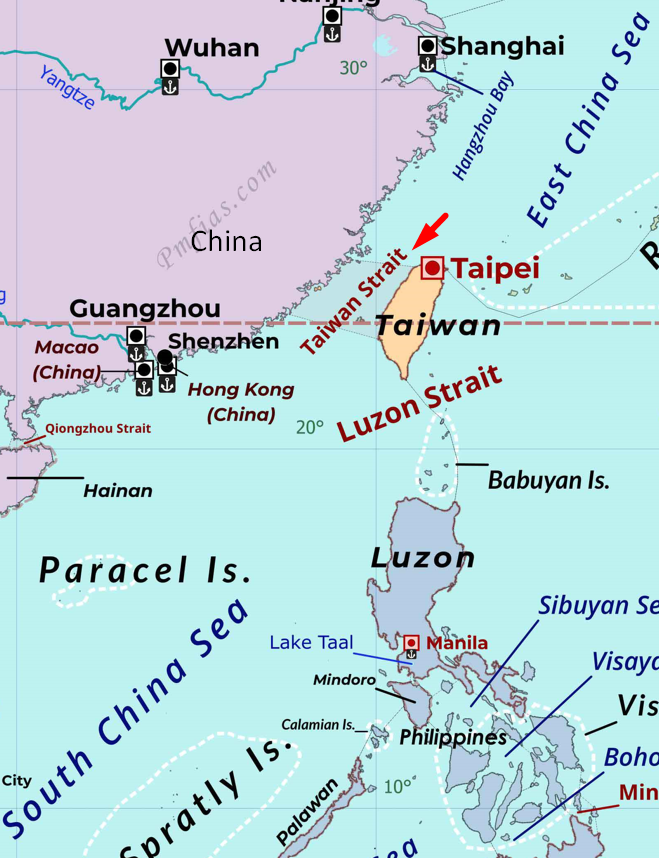
|
To know more, visit > China – Taiwan Conflict.
{GS2 – IR – Multilateral} History of the Antarctic Treaty
- Context (IE): The 46th Antarctic Treaty Consultative Meeting began on May 20 in Kochi, Kerala.
Historical Background: How did the Antarctic Treaty come into existence?
- Antarctica was first spotted by British, American, and Russian ships in the 1820s.
- The race to reach the South Pole intensified in the early 1900s.
- Captain Robert Scott (UK) and Roald Amundsen (Norway) competed. Amundsen reached the South Pole first on December 15, 1911.
Territorial Claims
- By the 1950s, seven countries made formal claims: Argentina, Australia, Chile, France, New Zealand, Norway, and the UK. Some claims overlapped, leading to conflicts.
- The US, Soviet Union, Belgium, Japan, and South Africa explored but did not claim territory.
Conflict
- Only Australia, France, New Zealand, Norway, and the UK recognised each other’s claims.
- Argentina, Chile, and the UK had conflicting claims. Between 1947 and 1955, Argentina and Chile rejected the UK’s proposal to resolve claims at the International Court of Justice (ICJ).
Resolution Attempts
- Several attempts were made to create an international agreement on Antarctica. For instance, in 1956, India requested the United Nations to include ‘the question of Antarctica’ on the agenda. However, the proposal failed due to opposition from Argentina and Chile and no support from the US and Soviet Union.
- India’s goals were:
- Ensure peaceful development of Antarctica’s resources.
- Demilitarise the area.
- Ban nuclear weapons testing.
- Refer future disputes to the International Court.
Major Breakthrough
- During the 1957-58 International Geophysical Year (IGY), 12 countries agreed to cooperate in scientific research in Antarctica.
- These countries were Argentina, Australia, Chile, France, New Zealand, Norway, the UK, the US, the Soviet Union, Belgium, Japan, and South Africa.
- They allowed scientific stations to be placed anywhere on the continent.
Treaty Formation
- The success of IGY led to momentum for an international agreement. On May 2, 1958, the US proposed a treaty to preserve Antarctica for scientific research and peaceful purposes.
- The Antarctic Treaty was signed by all 12 IGY participants and came into force in 1961.
Current Status
- 56 countries are now part of the treaty.
- 29 countries, including the 12 original signatories, are Consultative Parties.
- India joined the treaty in 1983 and is a Consultative Party.
Reasons Behind the Treaty’s Success
- The treaty strikes a balance between specificity and vagueness.
- It promotes compromise rather than conflict.
- It gives a sense of exclusivity to consultative parties but invites all nations to join.
- The treaty has evolved to address new challenges over time. For example, issues such as marine conservation, prohibition of mining, and environmental protection.
Challenges Ahead
- Climate change has caused record-high temperatures, and ice coverage has hit its lowest levels.
- Increase in tourism-related activities.
To know more, visit > Antarctic Treaty Consultative Meeting, Antarctic Treaty.
{GS2 – Polity – IC – FRs} Personality Rights and Their Protection *
- Context (IE): Hollywood actor Scarlett Johansson has accused OpenAI of using her voice despite her earlier declining licensing requests.
- OpenAI‘s latest AI model, GPT-4o, features Voice Mode. This mode allows users to have voice conversations with the AI chatbot and choose from five kinds of voices.
- Johansson said one of these voices, named ‘Sky’, was allegedly copying her voice.
What are Personality Rights?
- Personality rights refer to a person’s right to protect their personality, which is a part of the right to privacy or property.
- Personality rights or publicity rights are a subset of “celebrity rights” claimed by celebrities.
- The name, nickname, stage name, voice, signature, images, or any other feature easily identified by the public as markers of a celebrity’s personality lie at the heart of personality rights.
- These could include poses, mannerisms, or any other distinct aspect of their public persona.
- These rights are essential to celebrities as their names, photographs, or even voices can easily be misused in various advertisements by different companies to boost their sales.
- Therefore, it is necessary for renowned personalities/celebrities to register their names to save their personality rights.
- Celebrities often trademark aspects of their personalities for commercial use, ensuring only they can profit from their unique features.
- Footballer Gareth Bale has trademarked the heart sign he makes with his hands while celebrating a goal.
Types of Personality Rights
- Personality rights are divided into two categories:
- The right of publicity, or the right to keep one’s image and likeness from being commercially exploited without permission. It is similar (but not identical) to the use of a trademark.
- The right to privacy or the right to not have one’s personality represented publicly without permission.
Personality Rights in India
- In India, personality rights are protected by law through principles related to privacy and property rights, despite not being explicitly mentioned in statutes.
- Article 21 of the IC is the closest statute to protect personality rights under the rights to privacy and publicity.
- Copyright Act of 1957: Concepts in IPR cases, such as ‘passing off’ and ‘deception’, are usually applied in such cases.
- According to the Act, moral rights are only granted to authors and performers, including actors, singers, musicians, and dancers.
- It mandates that Authors or Performers have the right to be given credit or claim authorship of their work and also have the right to restrain others from causing damage to their work.
- Injunctions deter unauthorized commercial use of a celebrity’s identity by prohibiting specific activities, thus protecting their financial interests.
What is an injunction?
- An injunction is a legal remedy issued by a court that orders a person or entity to either perform a specific action or refrain from doing a particular act.
- It serves as a legal deterrent against the unauthorised commercial exploitation of a celebrity’s identity, helping to protect their financial interests.
|
- The Indian Trademarks Act of 1999: It also protects personal rights under Section 14, which restricts the use of individual names and representations.
Court judgements
- Justice K. S. Puttaswamy (Retd.) v. Union of India): The personality rights were elevated to the position of constitutional rights.
- An individual may be permitted to prevent others from using their image, name and other aspects of their personal life and identity for commercial purposes without their consent.
- Arun Jaitley vs Network Solutions Private Limited and Ors Case (2011): The Delhi HC held that an individual’s popularity or fame would be no different on the internet than in reality.
- The court had also stated that the name also falls in the category wherein, besides it being a personal name, it has also attained distinctive indicia of its own.
- Shivaji Rao Gaikwad (aka Rajinikanth) v. Varsha Production: Though there is no definition for personality rights under any statute in India, there is still the recognition of personality rights.
- ICC Development (International) Ltd. Vs. Arvee Enterprises: The right to publicity, derived from the right to privacy, is protected under Articles 19 and 21 of the IC.
Personal rights vs consumer rights
- Celebrities are protected from commercial misuse of their names and personalities, but consumers can be misled by false advertisements or endorsements involving them.
- To address this, the Ministry of Consumer Affairs issued guidelines in 2022, imposing penalties on endorsers of misleading advertisements.
{GS2 – Social Sector – Health – Issues} Tobacco Consumption in India
- Context (IE): A form of surrogate advertisement for oral tobacco, the endorsement of ‘elaichi’ and ‘masala’ by icons flies in the face of efforts to dissuade people from tobacco consumption.
Tobacco consumption in India
- Tobacco consumption in India is mainly through smokeless tobacco (oral tobacco).
- The Global Adult Tobacco Survey (GATS 2017) revealed that 29% of people over 15 years in India consume tobacco. There are twice as many oral tobacco consumers (21 per cent of the adult population) as those who smoke tobacco (10.7 per cent).
- Incidence of mouth cancer & head-neck cancer is increasing at a compound annual growth rate of 23%.
Impacts of tobacco consumption
- It leads to heart disease, strokes, lung disease, oral cancer, lung cancer, bladder cancer, esophageal and gastric cancer.
- Tobacco use can decrease life spans by one decade. In India, tobacco-related cancers represent 42 per cent of male and 18 per cent of female cancer deaths at ages 30-69 years.
Eradicating Tobacco consumption: The hurdles
- Issues in implementation of the ban: The ban on smoking in public spaces and regular increases in the price of cigarettes did decrease smoking, but led to the shift of the consumer towards oral tobacco. Since 2011, a ban on the production and sale of gutka (masala mixed with tobacco) has been legislated by most Indian states.
- Addiction: Nicotine, one of the active alkaloids in it, is among the most addictive products consumed. As per the GATS survey, 92 per cent of consumers of tobacco are well informed of its harmful effects. Their chemical dependence on nicotine makes it difficult for them to quit tobacco.
{GS3 – Envi – Conservation} Microbial methane oxidation system for landfills
- Context (DTE): A recent study proposes an innovative and sustainable approach to use microbial methane oxidation system (popularly called biocover) to control fugitive methane emissions from an old dumpsite at full scale in Estonia, Europe.
- The Estonian case study underscored the potential of using fine fraction from landfill mining for biocovers as a sustainable solution for methane control.
Methane emissions from landfills
- India has more than 3,000 legacy dumpsites that continuously generate methane.
- In 2016, methane emissions from India’s waste sector accounted for 14% of the nation’s total emissions.
- Methane, which is highly flammable, is the primary cause of landfill fires.
- Current methods for methane reduction in the waste sector: Source segregation, organic waste diversion, scientific treatment of MSW fractions, construction of sanitary landfills & dumpsite remediation.
What is Biocover?
- Biocovers are porous material layers typically spread over an entire landfill area.
- They are often waste materials, such as diverse composts, mechanically biologically treated waste, dewatered sewage sludge, or yard waste.
- It is an effective method to minimise methane (CH4) emissions from landfills through natural processing of microbial oxidation of CH4.
The method
- It consists of two layers: the gas dispersion layer and the CH4 oxidation layer, where actual oxidation takes place.
- The microbial CH4 oxidation process is carried out by a group of methanotrophic bacteria present in the soil biocover.
- The CH4 oxidation layer stops a fraction of CH4 produced in landfill sites from being released into the outer atmosphere.
- Both CH4 and oxygen are required for reducing CH4 emissions using the microbial CH4 oxidation process in landfill biocover.
- The biocover layer on landfills functions as a CH4 oxidation enhancer, converting CH4 into CO2, water, and biomass.
- Methanotrops are aerobes that have a special ability to oxidise CH4 under favourable conditions and to convert it into CO2, water (H2O) and microbial mass.
|
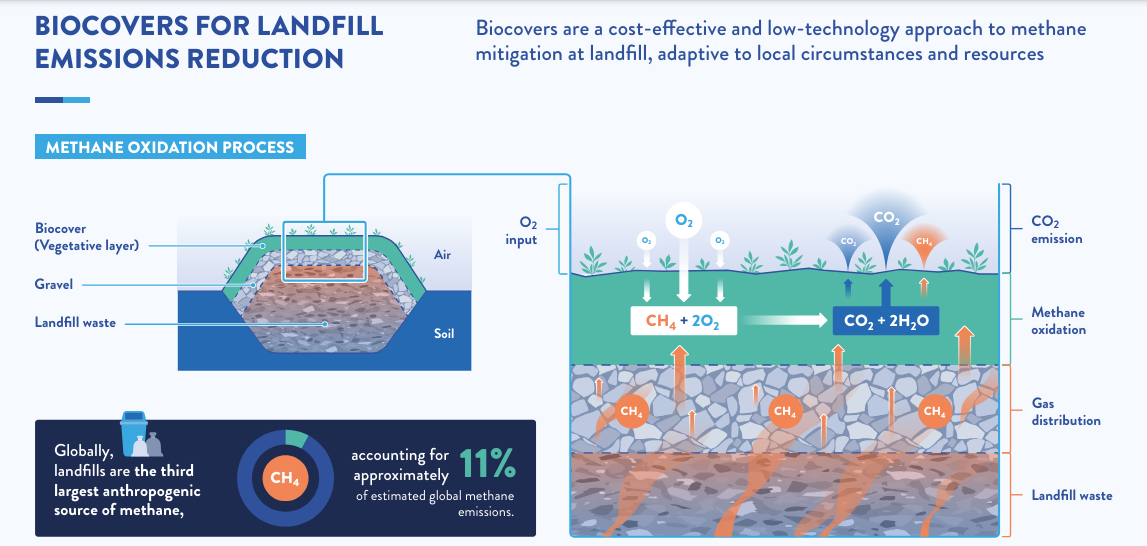
Credit: Climate and Clean Air Coalition
Factors affecting CH4 oxidation process
- Soil texture: Soil texture determines the porosity of the biocover layer, which influences CH4 diffusion from the gravel layer to the CH4 oxidation layer.
- Organic content: CH4 oxidation rate increases with the increase in the organic content of biocover.
- Moisture content: Excessive moisture in the soil cover negatively affects microbial CH4 oxidation by reducing the oxygen penetration level and biological activity.
- Temperature: Temperature greatly influences biological activity. A study found the optimum range of temperature varies between 15 degrees to 30 degrees.
- pH: Variation in the value of pH affects CH4 oxidation process in biocover of the landfill. pH below 5 negatively affects the rate of CH4 oxidation.
Benefits
- Through demand for composted material, it supports organic waste valorisation
- Supports circular economy
- Highly cost-effective
- Potential for climate finance
- Access to other materials when soil is not available for cover
{GS3 – IE – Imports} India’s laptop import monitoring system
- Context (IE): Japan and China raise questions over India’s laptop import monitoring system at WTO.
- Indonesia questioned India’s import monitoring of viscose staple fiber (VSF).
- India’s laptop import licensing measure was announced in August 2023 but was soon reversed.
- India’s move to restrict laptop imports had earlier gathered attention, particularly from the United States.
- As per the commitment under the Information Technology Agreement in 1997 at the WTO, India cannot increase the duty on laptops and similar products, which are currently imported at zero duty.
|
India’s response
- India argues that the questions raised by countries have no merit since there is no restriction on laptop and tablet imports in the country.
- India questioned no progress regarding the Carbon Border Adjustment Mechanism (CBAM) and Inflation Reduction Act (IRA) issues.
- The Inflation Reduction Act of 2022 (IRA) is a United States federal law that aims to curb inflation by possibly reducing the federal government budget deficit, lowering prescription drug prices, and investing in domestic energy production while promoting clean energy.
|
- Earlier, India replied that the laptop policy had been put in place to “manage and monitor import” of specified IT hardware Goods to ensure supply chain resilience and address national security concerns.
- India also clarified that license issuance will be “automatic in nature” and that it has no plans to expand the system beyond the listed products as of date.
Crucial for India
- Nearly 90 per cent of the laptops and personal computers (PCs) imported by India are manufactured in China, limiting strategic autonomy.
- Limiting laptop imports is also crucial for India since the production-linked incentive (PLI) scheme for IT hardware goods is moving slowly despite including Acer, Asus, Dell, HP, and Lenovo under the scheme.
{GS3 – IE – Imports} Reasons for increasing imports of pulses **
- Context (IE): There has been a surge in imports of pulses such as masoor, yellow/white peas, and chana due to climate-related production declines.
- Pulses saw an annual retail inflation of 16.84% in April 2024. This has impacted consumers more as pulses are rarely sold through the public distribution system.
Reasons for price rise
- El Nino-induced patchy monsoon and winter rain led to a decline in domestic pulse production.
- From 27.30 million tonnes (mt) in 2021-22 to 23.44 mt in 2023-24.
- Poor crop yields, especially in Karnataka, Maharashtra, Andhra Pradesh, and Telangana, as farmers planted less area due to irregular/deficient rainfall. The result: surge in imports.
- India’s pulses imports in 2023-24 were valued at $3.75 billion.
- In quantity terms, major pulses imports totalled 4.54 mt in 2023-24.
|
Government Actions
- Food inflation pressures forced the government to remove tariffs and quantitative restrictions (QR) on most of the pulses.
- Annual QRs of 0.2 mt on arhar/tur and 0.3 mt on urad & moong were lifted.
- The 10% basic customs duty on these pulses was also removed.
- The duty on masoor imports was reduced from 10% to nil.
- Yellow/white pea imports had a yearly QR of 0.1 mt, a 50% duty, and a minimum price of Rs 200/kg until December 8, 2023, when these curbs were removed.
Effects of Actions
- Imports of masoor (from Australia and Canada) hit a record 1.7 mt in 2023-24.
- Yellow/white pea imports (from Canada, Russia, and Turkey) surged to 1.2 mt.
- Chana imports (mostly from Tanzania, Sudan, and Australia) increased.
- Imports of arhar/tur (from Mozambique, Tanzania, Malawi, and Myanmar) and urad (mostly from Myanmar) remained flat or decreased.
India had achieved relative self-sufficiency in pulses from 2015-16 to 2021-22
- Domestic production increased from 16.32 mt to 27.30 mt.
- Government policies incentivised farmers through MSP-based procurement and import duties.
- This nearly stopped imports of yellow/white peas (matar) and chana by 2022-23.
- Domestic production was further boosted by the breeding of short-duration chana and moong varieties. These varieties can be cultivated with minimal irrigation, using residual soil moisture.
- The 50-75 day varieties of moong allowed planting of up to four crops a year: kharif, rabi, spring, and summer.
|
{GS3 – S&T – Tech} Smart Meters in Gujarat: Controversy and Protests
- Context (IE): Residents of Vadodara have protested against pre-paid smart electricity meters & demanded the re-installation of old meters. Protests spread to Surat, Rajkot, Jamnagar, Anand, and Godhra.
- The installation of prepaid smart meters across Gujarat is part of the 2021 government notification of the Revamped Distribution Sector Scheme (RDSS) for the state’s power sector.
About Smart Meters
- Unlike conventional meters, Smart meters can “communicate” data. They track energy consumption every 30 minutes and send updates to the consumer’s smartphone and the distribution company.
- Both (Conventional & smart meters) use the same algorithms; therefore, smart meters will not affect one’s monthly tariff if consumption does not change.
- Alert discoms in emergencies (e.g., overheating, power failure).
- Discoms can disconnect/reconnect remotely and track power quality.
- They are bi-directional, so consumers generating solar power at home do not need a new meter.
People’s Complaints
- Residents claimed overcharging daily since installation.
- Frequent power disruptions were reported when the balance went negative after Rs 300.
- No choice was given during installation. Threatened with a Rs 10,000 penalty for installation delays.
- Problems for non-smartphone users.
Steps taken
- The installation has now been put on hold. Gujarat’s four discoms decided to install check meters (old meters) alongside smart meters in government offices.
- Consumers will be invited to see the functioning of these meters. This is to dispel misinformation and win back consumer confidence.
Revamped Distribution Sector Scheme
Objective
- Reduce Aggregate Technical & Commercial (AT&C) losses to 12-15%.
- Reduce Average Cost of Supply (ACS)-Average Revenue Realised (ARR) gap to zero by 2024-25.
- To strengthen distribution and bring financial discipline to the sector.
- National outlay: Rs 3,03,758 crores; Gross Budgetary Support: Rs 97,631 crores.
- Duration: 5 years (FY 2021-22 to FY 2025-26).
Components of RDSS
- Part A: Financial support for Prepaid Smart Metering & System Metering. Upgradation of the Distribution Infrastructure. Part B: Training & Capacity Building. Other Enabling & Supporting Activities.
Financial assistance to DISCOMs
- For upgradation of Distribution Infrastructure.
- For Prepaid Smart Consumer Metering & System Metering.
- Based on meeting pre-qualifying criteria and achieving basic minimum benchmarks in reforms.
Integration of Existing Schemes
- Integrated Power Development Scheme (IPDS).
- Deen Dayal Upadhyaya Gram Jyoti Yojana (DDUGJY).
- Prime Minister’s Development Package (PMDP)-2015 for Jammu & Kashmir.
- No new projects will be sanctioned under these schemes.
|
{GS3 – S&T – Tech} World’s First ‘Electric Cement *
- Context (BBC): Scientists from Cambridge University have found a way to recycle cement from demolished buildings.
Cement & Carbon emissions
- Cement is the most common construction material. It binds sand and aggregate in concrete.
- It is a major source of greenhouse gas emissions. If cement were a country, it would be the third largest emitter after China and the US. Cement production accounts for 7.5% of human-made CO2.
- Heating limestone to high temperatures with fossil fuels causes emissions.
About recycled cement
- The scientists found that they can reactivate used cement by heating it again. They are calling it “electric cement”. This can be done using heat from steel recycling.
- Steel recycling uses chemicals to create slag. Used cement has a similar composition to slag.
Significance
- It can decarbonise the entire cement-making process. Also reduces pollution in steel recycling.
- Electric cement may be cheaper due to waste heat usage from steel recycling.
{Prelims – Awards} International Booker Prize 2024
- Context (TH): Kairos by Jenny Erpenbeck, translated by Michael Hofmann, won the International Booker Prize 2024.
- The International Booker Prize is awarded annually for a single fiction book translated into English and published in the UK or Ireland.
- Award: The £50,000 prize money is divided equally between the author and the translator.
- It was originally a biennial prize, began in 2005 as the Man Booker International Prize.
- After 2015, it expanded to allow living writers of any nationality to enter and was made annual.
- In 2019, the Man Booker International Prize was renamed the International Booker Prize.
- Novels and collections of short stories are both eligible.
- 1st Indian citizen winner: Author Geetanjali Shree for her Hindi novel Tomb of Sand (2022).
How is the Booker Prize different?
- The Booker Prize was first awarded in 1969. The inaugural Booker Prize was awarded to P.H. Newby for his novel “Something to Answer For”.
- Founders: Tom Maschler and Graham C Greene.
- It is awarded for fiction written in English (not the translated one) and published in the UK and Ireland.
- Until 2014, only novels written by Commonwealth, Irish, and South African citizens were eligible to receive the prize. Later, it was expanded to all nationalities.
- The winner of the Booker Prize 2023 is Prophet Song by Paul Lynch.
- Important winners: 1st Indian origin winner – VS Naipaul, 1st Indian citizen winner – Arundhati Roy.
{Prelims – Envi – Species} Phtheirospermum lushaiorum *
- It is named after the “Lushai” tribe of Mizoram.
- Phtheirospermum lushaiorum attach themselves to the roots of their host and appear like normal plants growing in the soil.
- They flower only from July to September, and fruits are produced from August to October.
- Physical appearance: The plants appeared similar to Pterygiella species but had a shorter height, distinct bilabiate yellow flowers, and didynamous stamens.
Hemi-parasitic plants
- They lack a fully developed root system and form connections with other plants, from which they obtain some or all of their water and minerals.
- Such plants have chlorophyll and produce their own food through photosynthesis. In some cases, they are capable of limited growth in the absence of the host plant.
- They tap into sap-conducting tissue of the host by means of specialised structures called haustoria.
|
Lushai tribe
- Lushai is a tribe under the Kuki-chin group of tribes, mainly in Tripura. Racially they are known to be under Mongoliod origin. Their culture is akin to the Mizos.
- Lushai lives on Jhum Cultivation. Also famous as an orange-producing community.
- At one point, the Lushais were known as a Head Hunter community. During the first part of the 19th century, most of the Lushai converted to Christianity.
- Their Cheraw Dance (Bamboo Dance) is very popular.
|
{Prelims – In News} Navy changed names of ‘Jackstaff’ and ‘Jack’
- Context (IE): The Navy has changed the names of ‘Jackstaff’ and ‘Jack’ on board ships to ‘National Flag Staff’ and ‘National Flag’.
- ‘Jack’ refers to a flag in naval parlance, usually the national flag, and ‘Jackstaff’ is a short pole on the bow of a ship from which it is flown. Both terms have their origins in British naval traditions.
- The Regulations for the Navy (Ceremonial, Conditions and Service and Miscellaneous Regulation) 1963 has been amended by the central government using its powers under the Naval Act 1957.
- In September 2023, in a move to distance itself from the colonial past, the Indian Navy adopted a new naval ensign or a naval flag, doing away with the British-inspired George’s Cross.
{Prelims – S&T – Space} Gliese 12 b
- Context (DTE): Astronomers have discovered a potentially habitable exoplanet, Gliese 12 b, about 40 light-years away from Earth.
- The team used observations from the Transiting Exoplanet Survey Satellite (TESS) and the European Space Agency’s CHaracterising ExOPlanet Satellite (CHEOPS) to validate Gliese 12 b.
- Gliese 12 b is a super Earth exoplanet that orbits Gliese 12, a M dwarf star (a type of low-mass star).
- Its mass is 3.87 Earths, and it takes 12.8 days to complete one orbit of its star.
- The planet, which is a bit smaller than Earth and similar in size to Venus, has an estimated surface temperature of 107 degrees Fahrenheit (42 degrees Celsius), which is lower than the majority of the 5,000 or so exoplanets discovered thus far.
- It represents one of the best targets to study whether Earth-size planets orbiting cool stars can retain their atmospheres.
- The habitable zone is the distance from a star at which liquid water can exist on the surfaces of planets orbiting it.
|
{Prelims – Sci – Bio – Diseases} Rubella (German measles) *
- Context (IE): Dr. Paul D. Parkman, who was instrumental in identifying the virus that causes rubella and developing a vaccine, died recently.
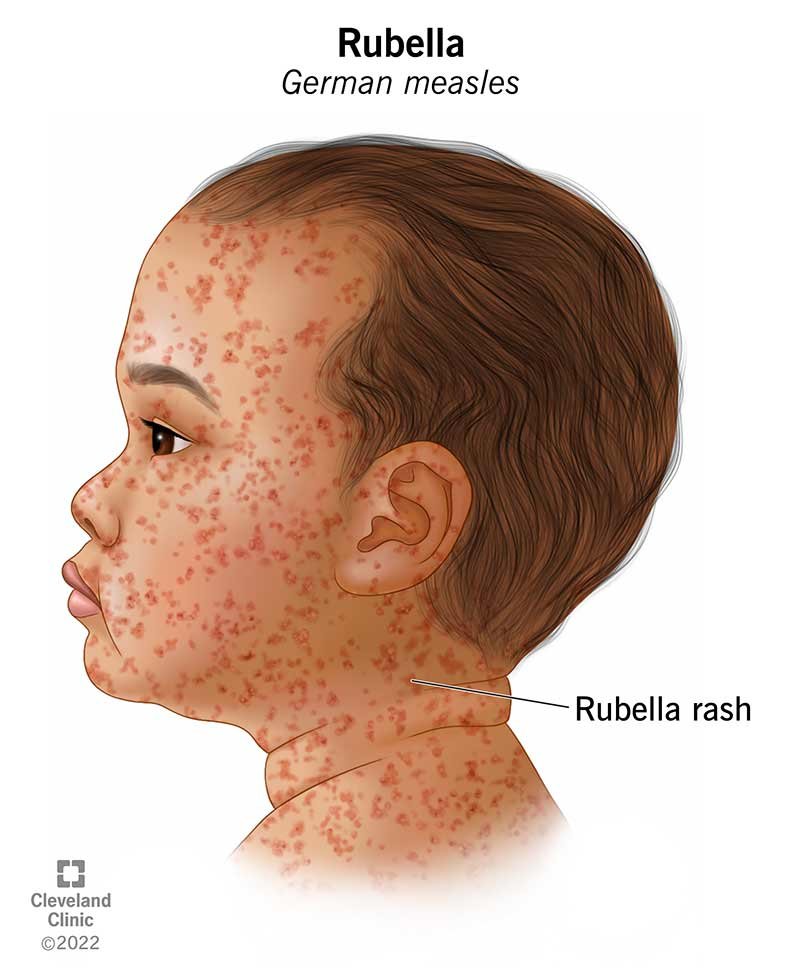
Credit: Cleveland Clinic
- Rubella, also known as German measles, is a contagious viral infection (caused by the virus RuV).
- Transmitted by airborne droplets that occur most often in children and young adults.
- Symptoms: Spotty, itchy red rash.
- Impacts: Moderate illness for most, but dangerous for pregnancies. It can cause severe physical and mental impairments in infants. Also leads to miscarriages and stillbirths.
- It was declared eliminated in the Americas in 2015. It is still present in Africa and Southeast Asia.
- In 1964-65, a rubella epidemic occurred in the US. It caused 11,000 miscarriages, 2,100 newborn deaths, and 20,000 birth defects.
|
Newsletter Updates
Subscribe to our newsletter and never miss an important update!
Assured Discounts on our New Products!


